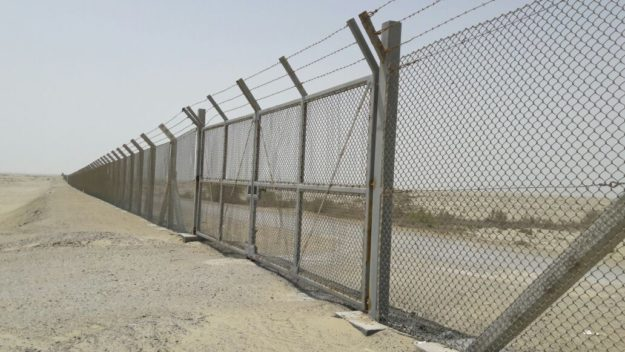Ongoing efforts by Pak’s oppressive authority to erect fencing around parts of Gwadar city have sparked protest from local residents, leading to temporary suspension of the work. The Pak Army claims the fencing initiative is a security measure, however, it is an attempt to regulate the movement of citizens, occupy and exploit their resources as well as harass those who are dependent on the resources.
The coastal city is a key part of the China-Pakistan Economic Corridor (CPEC) where Army is planing to issue special entry cards or passes to residents. Earlier as well, under the guise of these dubious projects, checkpoints have been set up in every alley in Gwadar, allowing Pak establishments, including the Coast Guard, to enter homes and evict residents.
However, these moves have been met with resistance from segments of the local populace as this fencing and planned access regulations is infringements on their rights and freedom of movement within the city.
Footage from the area captured authorities erecting fencing around neighborhoods before the work was halted in the face of growing public backlash and protests by residents.
Gwadar is a key node of the multi-billion dollar CPEC infrastructure project aimed at connecting China to the Arabian Sea and Strait of Hormuz through Pakistan.
The much-hyped infrastructure projects that the Chinese promised at the cost of the Baloch community have fallen short; locals grapple with basics like clean water and electricity. Recent rains left residents submerged in 5 to 6 feet of water due to flooding, with no assistance from the district administration and provincial authorities.
Despite being in a disaster situation, the Pak Army failed to even provide basic necessities and help to the community. These projects have brought investment and economic opportunities only for the Army, and their negative impact is borne by the local populations.

